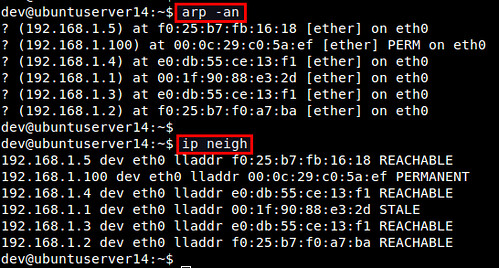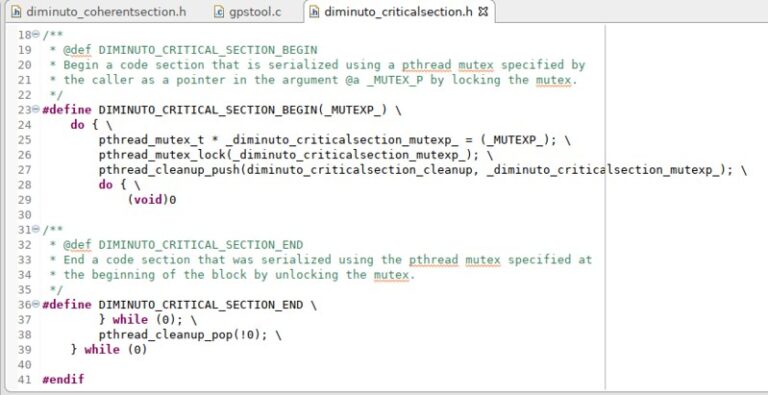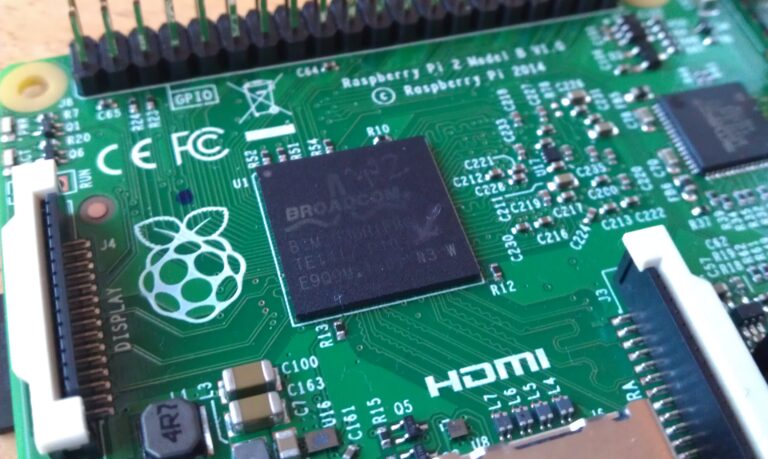Introduction
In the realm of computer networking, the efficient exchange of data relies on the seamless interplay between various components. Two fundamental elements in this intricate dance are the ARP (Address Resolution Protocol) table and the switch table. While both play pivotal roles in facilitating communication, they have distinct functions and operate at different layers of the network. In this comprehensive article, we delve into the nuances of ARP table vs switch table, exploring their features, differences, and impact on network performance.
Table of Contents
Understanding ARP Table
ARP Table Functionality
When a device seeks to communicate with another within the same network, it checks its ARP table for the MAC address associated with the target’s IP address. If the information is not present, the device initiates an ARP request, prompting the target device to respond with its MAC address. This information is then stored in the ARP table for future reference, optimizing subsequent communications.
ARP Table vs Switch Table: Different Layers, Different Roles
One crucial distinction between the ARP table and the switch table lies in the OSI (Open Systems Interconnection) model layers at which they operate. The ARP table functions at the network layer (Layer 3), managing IP addresses, while the switch table operates at the data link layer (Layer 2), dealing with MAC addresses.
The ARP table’s role is vital for routing packets between different networks, as it resolves IP addresses to MAC addresses. In contrast, the switch table excels in forwarding data within the same network based on MAC addresses, enhancing local network efficiency.
Understanding Switch Table
A switch, a key networking device, utilizes the switch table to make forwarding decisions based on MAC addresses. Unlike older network hubs that broadcast data to all connected devices, a switch intelligently directs data only to the specific device it is intended for, minimizing network congestion and enhancing overall performance.
Switch Table Functionality
When a device sends data within a local network, the switch examines the MAC address of the data frame. The switch table, also known as a MAC address table, stores information about the MAC addresses of devices connected to its ports. If the switch finds a match between the destination MAC address and an entry in its table, it forwards the data only to the specific port where the target device is located, significantly improving network efficiency.
The Intricate Dance: ARP Table and Switch Table in Action
For a comprehensive view of the networking ballet, let’s explore how ARP table and switch table collaborate during a typical communication scenario:
- Initiation:
- A device, let’s call it Device A, intends to communicate with Device B on the same network.
- Device A checks its ARP table for the MAC address corresponding to Device B’s IP address.
- If the ARP table lacks this information, Device A initiates an ARP request.
- ARP Request:
- The ARP request is broadcast across the local network.
- Device B receives the ARP request and responds with its MAC address.
- ARP Table Update:
- Device A updates its ARP table with the newly acquired MAC address of Device B.
- Switch Table Comes into Play:
- Simultaneously, the switch table is consulted when Device A sends data to Device B.
- The switch table guides the switch to forward the data only to the port where Device B is connected, based on its MAC address.
- Efficient Data Transfer:
- The data travels directly from Device A to Device B, thanks to the collaborative efforts of the ARP table and switch table.
- Unnecessary broadcast and potential congestion are minimized, ensuring optimal network performance.

Differences Between ARP Table vs Switch Table
1. Layer of Operation
- ARP Table: Operates at the network layer (Layer 3), dealing with IP addresses.
- Switch Table: Operates at the data link layer (Layer 2), managing MAC addresses.
2. Function
- ARP Table: Resolves IP addresses to MAC addresses, crucial for inter-network communication.
- Switch Table: Forwards data within the same network based on MAC addresses, enhancing local network efficiency.
3. Scope
- ARP Table: Facilitates communication between devices on different networks.
- Switch Table: Optimizes data transfer within the same local network.
4. Address Resolution
- ARP Table: Resolves IP addresses to MAC addresses through ARP requests.
- Switch Table: Matches destination MAC addresses with corresponding ports for efficient data forwarding.
5. Network Impact
- ARP Table: Critical for routing between networks, especially in larger infrastructures.
- Switch Table: Improves local network efficiency by minimizing unnecessary data broadcasts.
ARP Table vs Switch Table: Finding Harmony in Networking
In the intricate symphony of networking, both ARP table vs switch tables play indispensable roles. Their collaboration ensures that data reaches its destination swiftly and efficiently, contributing to a seamless user experience. Let’s delve deeper into specific aspects of each and examine scenarios where one might outshine the other.
ARP Table: Navigating Inter-Network Communications
Address Resolution Protocol (ARP)
The Address Resolution Protocol, as the name suggests, focuses on resolving addresses. In the context of networking, addresses refer to IP addresses and their corresponding MAC addresses. Here’s a closer look at the key characteristics of ARP tables:
1. ARP Requests and Responses
- When a device lacks the MAC address corresponding to a target IP address, it initiates an ARP request.
- The ARP request is broadcast to all devices within the local network.
- The device with the target IP address responds with its MAC address.
2. Dynamic ARP Table Entries
- ARP tables are dynamic and continuously updated based on network activities.
- Entries may have a time-to-live (TTL) value, after which they are refreshed through ARP requests.
3. IP to MAC Address Resolution
- ARP tables exclusively deal with resolving IP addresses to corresponding MAC addresses.
- This resolution is crucial for devices to communicate across different networks.
4. Network Layer Operations
- Operates at the network layer (Layer 3) of the OSI model.
- Essential for routing packets between devices on different networks.
5. Role in Larger Networks
- Especially critical in larger network infrastructures where devices span multiple subnets.
- Enables seamless communication between devices across diverse IP ranges.
Scenario: Inter-Network Communication
Consider a scenario where a company has multiple branches interconnected through a wide area network (WAN). The ARP table becomes instrumental in facilitating communication between devices in different branches. When a device in one branch needs to communicate with a device in another, the ARP table ensures the resolution of IP addresses to MAC addresses, allowing packets to traverse the WAN efficiently.
Switch Table: Mastering Local Network Efficiency
Switch Table (MAC Address Table)
The switch table, operating at the data link layer, focuses on optimizing local network efficiency. Here are key aspects that define the role and functionality of switch tables:
1. MAC Address to Port Mapping
- Switch tables maintain a mapping of MAC addresses to the specific ports to which devices are connected.
- This mapping guides the switch in forwarding data frames only to the relevant ports.
2. Unicast Data Forwarding
- Unlike network hubs that broadcast data to all connected devices, switches forward data only to the intended recipient.
- This minimizes unnecessary traffic and enhances the overall speed and efficiency of the local network.
3. Static and Dynamic Entries
- Switch tables can have both static and dynamic entries.
- Static entries are manually configured, while dynamic entries are learned through network activity.
4. Layer 2 Operations
- Operates at the data link layer (Layer 2) of the OSI model.
- Focuses on efficient data forwarding within the local network.
5. Role in Localized Networks
- Particularly valuable in smaller to medium-sized networks where devices are in close proximity.
- Minimizes data collisions and optimizes the use of available bandwidth.
Scenario: Localized Data Transfer
In a scenario where a business operates within a single building with multiple departments, the switch table shines. Devices within the same local network frequently communicate with each other. The switch table, by efficiently directing data based on MAC addresses, ensures that data travels directly from the source device to the target device without unnecessary broadcasts. This localized efficiency is crucial for maintaining optimal network performance in a confined space.

FAQ Section
1. What is the purpose of an ARP table?
The ARP table resolves IP addresses to corresponding MAC addresses, facilitating communication within and between networks.
2. How does an ARP table get updated?
ARP tables are dynamic and get updated through Address Resolution Protocol (ARP) requests initiated by devices when they lack the MAC address corresponding to a specific IP address.
3. What is the significance of a switch table in a local network?
A switch table, operating at the data link layer, ensures efficient data forwarding within a local network by mapping MAC addresses to specific ports.
4. Can a device communicate across networks without an ARP table?
Communication across networks relies on the ARP table, as it resolves IP addresses to MAC addresses, enabling devices to route packets to their intended destinations.
5. Do switch tables operate in larger network infrastructures?
While switch tables are crucial for local network efficiency, they play a more prominent role in smaller to medium-sized networks where devices are in close proximity.
6. What happens if an ARP table entry expires?
ARP table entries may have a time-to-live (TTL) value. If an entry expires, the device refreshes it by sending a new ARP request to the target device.
7. Can a device communicate with another on the same local network without a switch table?
While communication is possible, the presence of a switch table significantly optimizes the process by directing data only to the specific port where the target device is connected.
8. How do ARP table vs switch table collaborate during data transfer?
ARP tables resolve IP addresses to MAC addresses, enabling devices to communicate across networks. Switch tables then guide the efficient forwarding of data within the local network based on MAC addresses.
9. Do ARP tables play a role in wireless networks?
Yes, ARP tables are essential in wireless networks as they facilitate the resolution of IP addresses to MAC addresses, enabling communication between devices.
10. Can a switch operate without a switch table?
Switches rely on switch tables to make informed forwarding decisions based on MAC addresses. Operating without a switch table would result in less efficient and more broadcast-heavy data forwarding.
Conclusion
In the dynamic landscape of computer networking, the ARP table and switch table stand as pillars, each supporting a specific facet of data communication. The ARP table, with its focus on resolving IP addresses for inter-network communication, complements the switch table, which excels in optimizing local network efficiency. Together, they form a symbiotic relationship that ensures the seamless flow of data, whether within a confined space or across expansive networks.
Understanding the intricacies of ARP table vs switch table is crucial for network administrators, IT professionals, and enthusiasts alike. By grasping the nuances of these components, one gains a deeper appreciation for the underlying mechanisms that drive efficient and reliable data transfer in the digital age. As technology evolves, so too will the roles of the ARP table vs switch table, continuing to shape the landscape of computer networking.
(If you’re interested in more computing related comparisons, be sure to check out our post on Machine Language vs Assembly Language.)








One Comment